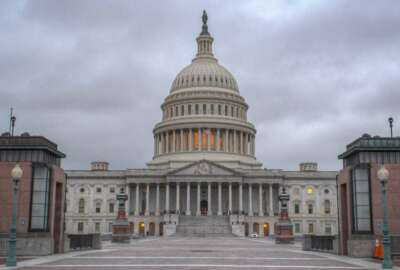
Friday the 13th: Pulse check for 2020 COLA, pay raise
Earlier this year, the chances of both (or either) a federal pay raise and a separate cost of living adjustment for retirees were hovering somewhere between slim...
Earlier this year, the chances of both (or either) a federal pay raise and a separate cost of living adjustment for retirees were hovering somewhere between slim and slimmer.
The president called for a zero pay raise in January, and the investors and financial experts were anticipating a major stock market “correction” of 20% or greater would end the record 10-plus year bull market. North Korean rocket activity, oil tanker intercepts in the the strait of Hormuz, the on-going Arab-Israeli situation, the Russian nuke accident and lack of an “exit” in the U.K.’s Brexit plan have all given many investors the jitters. Oh, and the trade war with China adds fuel daily to the uncertainty fire.
Then a funny, as in surprising, thing happened — just before the long Labor Day weekend the White House endorsed a 2.6% federal civilian pay raise. It would be across-the-board with no locality adjustments.
Earlier the House had approved a 3.1% pay hike, giving everyone a 2.6% boost with the remainder going to locality adjustments. That, if it OK’d by the Senate and White House, would mean even bigger raises for white collar civil servants in high-wage areas like New York City, Houston, Los Angeles, San Francisco and the Washington-Baltimore locality area.
The proposal, although in line with the bipartisan Federal Employees Pay Comparability Act, caught a lot of people off guard. This is increasingly the pattern these days with much of what happens, or not, in Washington.
COLAs are different. They are not pay raises determined by politics of fiscal considerations. COLAs are based on the increase, if any, of urban living costs from the third quarter of the current year (July, August, September) over the Consumer Price index-W for the previous year’s third quarter, if any.
With two months to go in the countdown the potential COLA now stands at around 1.6%. The August COLA will be announced later this month. The COLA for September will be made public Oct. 10.
The full and exact amount of the COLA depends on the increase or decrease in the CPI-W for the months of September and August. Millions of American retirees — Social Security, civil service and military — get a catch-up-with-inflation increase each January. In 2018 the COLA was 2.8% for retirees under the Civil Service Retirement System and 2.0% for those retired under the Federal Employees Retirement System which replaced it.
A majority of people still working for Uncle Sam are under FERS, while most people currently retired from the government did so under the CSRS program.
The annual COLA is based on the rise in living costs, as measured by the CPI-W, from the third quarter of the current year (July, August and September) over the third quarter of the previous year. But looking for trends or patterns is tricky because living costs, like the stock market, go up and down. In June for example they decreased by 0.1%. That said there are some projections which say that if the CPI rises in August and September the COLA could be 1.5%, or in that neighborhood.
So pay raise? Yes, looking good even though the amount is to-be-determined. A COLA is also looking good but we won’t know until October and if so, how much.
Nearly Useless Factoid
by Amelia Brust
Every year, the San Francisco Municipal Transportation Agency (Muni) holds a bell-ringing contest for the city’s iconic cable cars in Union Square. The goal is to “recreate the atmosphere of an operator in service, featuring best performances for customers coasting along San Francisco’s scenic cable car lines.” Operators are judged on rhythm, originality and style, and are not allowed props, electronic devices or additional accompaniment. This year’s contest is scheduled for Oct. 10.
Source: SFMTA
Copyright © 2025 Federal News Network. All rights reserved. This website is not intended for users located within the European Economic Area.
Related Stories




